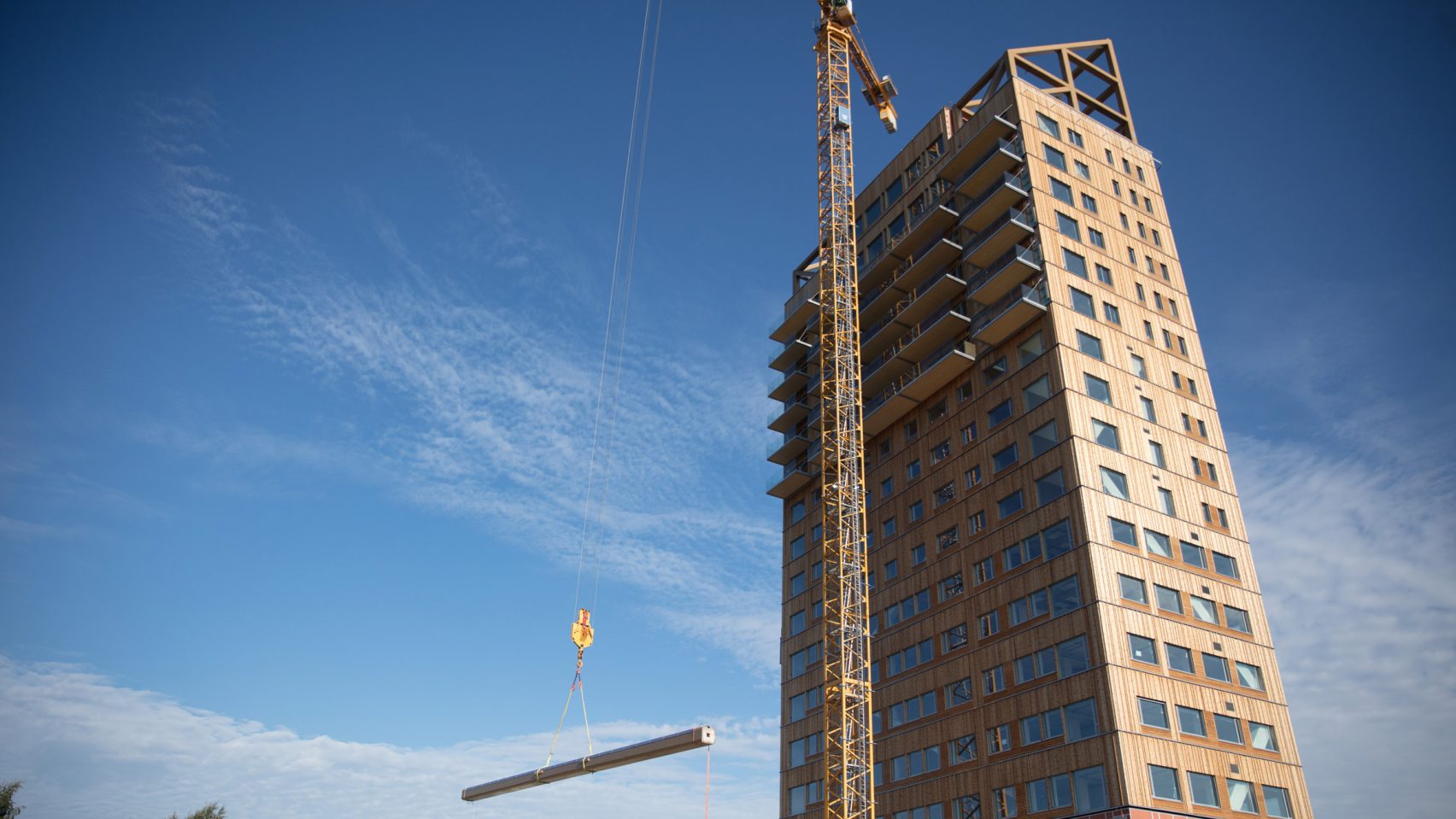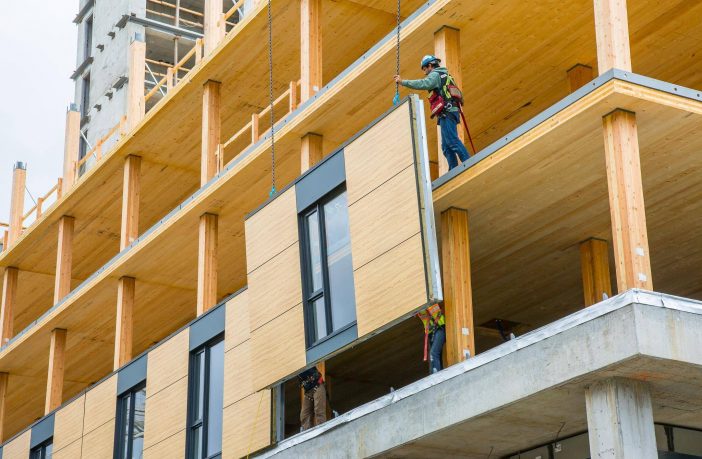- The return to wood is a natural recourse from steel and concrete for skyscraper projects.
- The new renaissance is a sign of the times – we are going back to nature.
- In the event of a fire, wood retains its load-bearing capacity for a relatively long time.
- Wood can therefore achieve a relatively high fire resistance class.
- Steel, for example, loses its load-bearing capacity much faster in the event of a fire.
Buildings are responsible for about one third of all carbon emissions globally. Architects and property developers are now looking at construction with sustainability in mind. The Mjøstårnet, a mixed-use tower in Brumunddal, Norway which stands at 85.4m is a shining example of what can be achieved when constructing with wood. Read more
The return to wood is a natural recourse from steel and concrete for skyscraper projects. Here are the reasons why:
- High rise construction using wood reduces carbon emissions by simply replanting where a tree is felled. This is particularly true where timber resources grow faster than it consumed.
- The wooden construction has a higher savings rate on CO2 equivalents compared to a reinforced concrete.
- Wood has much less embodied energy from source to site than concrete and steel.
- If treated properly, it is also slow-burning and self-extinguishing without releasing toxic fumes.
- In the event of a fire wood retains its load-bearing capacity for a relatively long time. Wood can therefore achieve a relatively high fire resistance class. Steel, for example, loses its load-bearing capacity much faster in the event of a fire.
- Wood is durable, easy to repair and easy to recycle.
- By integrating more wood into the building, less reinforced concrete is required.
- Wood is stable, tough and elastic at the same time. It is therefore very versatile and can be used for multiple interior features.
- Wood components can be prefabricated making ‘just in time’ modular construction possible.
- Wood insulates comparatively well and has a lower U-value than other building materials, such as bricks.
- Because of their higher insulation quality, walls of a wooden building can be thinner. A ten-by-ten-metre timber structure can offer the occupant about 10 percent more space than a brick structure of the same size.
- Wood can absorb and release moisture. The building material thus ensures a healthy room climate and optimum humidity.

Pic: Mjøstårnet, a mixed-use tower in Brumunddal, Norway. Credit: Voll Arkitekter
It is clear timber, provided that is readily available, can be exploited to the fullest as construction material. The new renaissance is a sign of the times – we are going back to nature.
Author: Bryan Groenendaal
















1 Comment
All good and well , except once again we are going to be depleting our forests which are needed much more for clean air and oxygen. Another minus is that wood needs a lot of maintenance especially in dry climates .